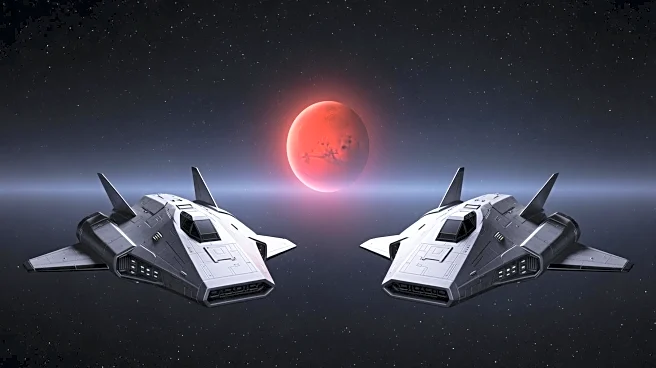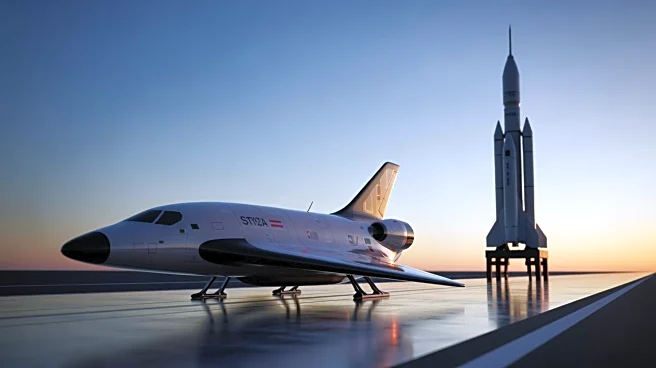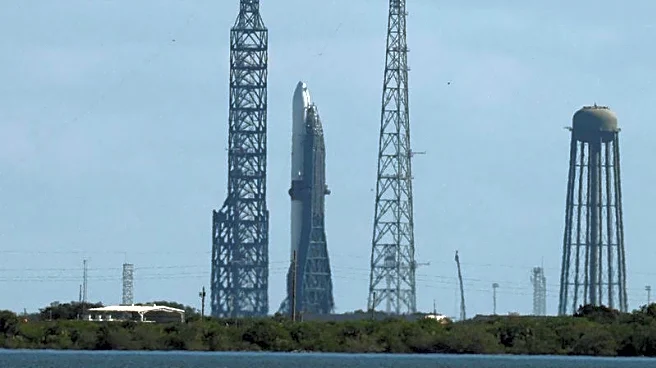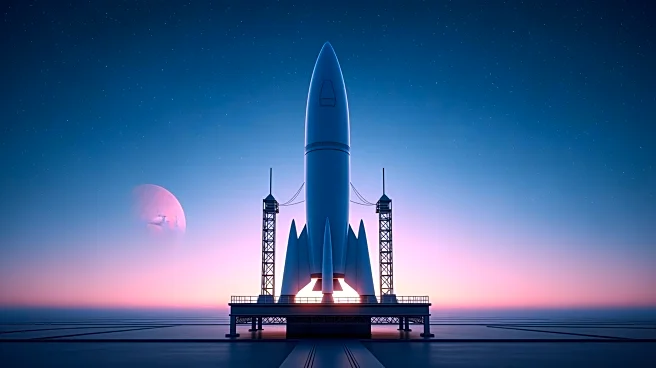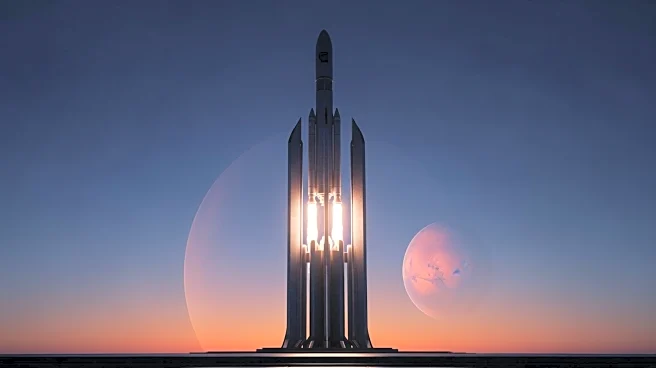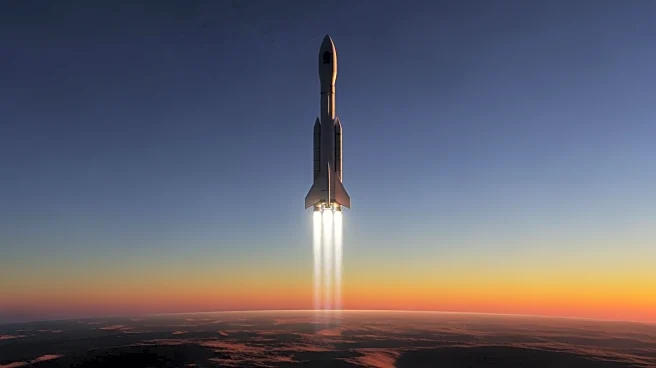What's Happening?
NASA's ESCAPADE mission, part of the SIMPLEx program, has been launched by Blue Origin's New Glenn rocket from Cape Canaveral Space Force Station. The mission involves two spacecraft, Blue and Gold, which
will orbit Mars to study its magnetosphere and the effects of solar wind on atmospheric loss. The mission is led by the University of California, Berkeley's Space Sciences Laboratory, with the spacecraft designed and built by Rocket Lab. The launch is part of NASA's VADR contract, aimed at fostering commercial launch market growth.
Why It's Important?
The ESCAPADE mission is significant as it aims to provide insights into Mars' climate history by studying its magnetosphere and atmospheric loss. Understanding these processes is crucial for future human and robotic missions to Mars, as it can help in developing strategies to protect them from space weather. The mission also represents a collaboration between NASA and commercial partners, highlighting the growing role of private companies in space exploration.
What's Next?
The ESCAPADE spacecraft are expected to arrive at Mars in 2027, where they will begin their scientific mission. The data collected will help scientists understand the dynamics of Mars' magnetosphere and its interaction with solar wind, potentially influencing future Mars exploration strategies.
Beyond the Headlines
The mission underscores the importance of international and commercial partnerships in advancing space exploration. It also highlights the potential for small, innovative missions to contribute significantly to our understanding of planetary environments.


